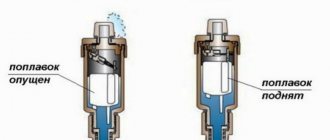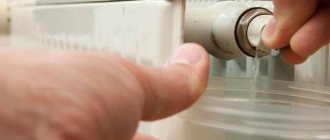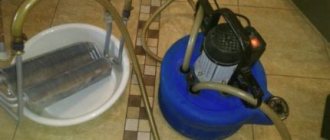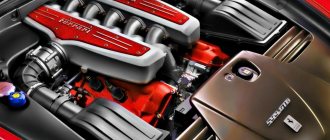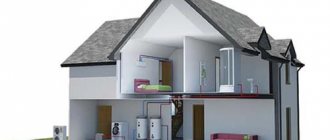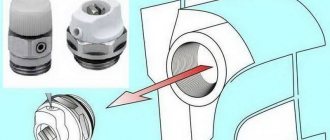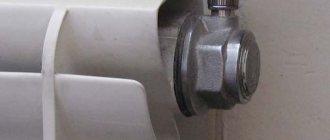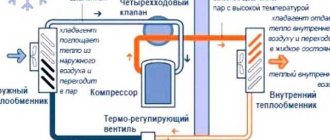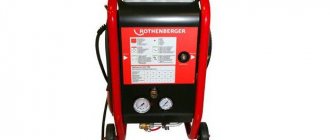Due to the accumulation of oxygen and carbon dioxide in heating systems, air jams appear. Most often, this problem occurs after a long period of inactivity, for example, at the end of the summer season before its first start, after repair or replacement of any parts. Therefore, in order for the heating of the room to be complete and not cause discomfort, you need to know how to remove air from the heating system in a private house.
This is what airing the system looks like on a thermal imager
Causes and consequences
The reasons for the occurrence of air jams are the following factors:
- Errors were made during installation, including incorrectly placed bends or incorrectly calculated slope and direction of pipes.
- Filling the system with coolant too quickly.
- Incorrect installation of air vent valves or their absence.
- Insufficient amount of coolant in the network.
- Loose connections between pipes and radiators and other parts, which allows air from outside to enter the system.
- The first start-up and excessive heating of the coolant, from which oxygen is more actively removed under the influence of high temperature.
Air can cause the greatest harm to systems with forced circulation. During normal operation, the bearings of the circulation pump are constantly in water. When air passes through them, they are deprived of lubrication, which leads to damage to the sliding rings due to friction and heat or completely damages the shaft.
Water contains oxygen, carbon dioxide, magnesium and calcium in a dissolved state, which, when the temperature rises, begin to disintegrate and settle on the walls of the pipes in the form of limescale. Places of pipes and radiators filled with air are more susceptible to corrosion than others.
Signs by which you can determine whether there are air pockets in pipes and radiators
Due to air in the heating system, the radiators heat up unevenly. When checked by touch, their upper part, compared to the lower part, has a noticeably lower temperature. The voids do not allow them to warm up properly, so the room is less heated. Due to the presence of air in the heating system, when the water is very heated, a noise appears in the pipes and radiators, similar to clicks and water flowing.
You can determine the place where the air is located by ordinary tapping. Where there is no coolant, the sound will be louder.
Note! Before removing air from the network, you should find the cause of its appearance and eliminate it.
Check the network especially carefully for leaks. When the heating is running, it is extremely difficult to identify leaky connections, since water quickly evaporates on a hot surface.
Why are air locks dangerous?
The performance of a closed heating system depends entirely on the circulation of the coolant and the supply of a certain amount of heat to the radiators. If air appears in a closed heating system, the normal movement of fluid is disrupted. This phenomenon is considered unpleasant and can cause:
- characteristic noise during water movement. It should be noted that the pipes begin to vibrate, connections weaken, welds are destroyed;
- Air pockets form in the system. Air accumulated in remote areas of the system can disrupt water circulation, and if measures are not taken in a timely manner, the system can be defrosted;
- the efficiency of the heating system decreases, the consumption of fuel resources increases;
- Inside, air enters metal surfaces, contributing to the formation of corrosion.
Air accumulations in the heating system contribute to a shortening of its operational period and premature failure of the equipment.
Air removal methods
There are heating systems with forced and natural circulation of coolant. In the first case, the liquid flows using a circulation pump, and in the second, due to a certain inclination of the pipes and the pressure in them.
Natural circulation systems
An expansion tank is used to remove air from this type of system. It is installed at its highest point. Most of the air is independently removed through it when the coolant is heated. If air pockets still remain, many experts recommend increasing the amount of fluid in the system by opening the air vents. Thus, the coolant itself will displace the air from the network with movement and pressure.
Forced circulation systems
In systems with a circulation pump, pipes and radiators are located level and without slope. Air vents are used to remove air from them. They are always mounted at the bends and at its highest points, since this is where the accumulation of gases occurs.
Note! If it is not possible to remove air from the system using air vents, then it is necessary to drain all the coolant and refill it.
It is necessary to pour the coolant into the system slowly, since rapid filling causes air bubbles to form. At the same time, you need to remove air from radiators and other elements. The longer the system, the longer it takes to fill it with coolant. If a heated floor is connected to the heating network, then the installation of air vents is mandatory, since the pipes are often located at different heights. You also need to constantly monitor the amount of coolant in the system to exclude the possibility of air getting into it.
Filling the system correctly
The easiest way is to pump water or antifreeze into pipelines connected to an open expansion tank. To do this, you need to open all the valves (except for the drain) and, by attaching a hose to the make-up fitting, fill the lines and radiators with coolant. In this matter, it is important to take your time and allow the air to leave the system on its own through the expansion tank.
Advice. After filling, turn on the circulation pump and boiler, and then warm up all heating devices. Then release the remaining air from them through the Mayevsky taps. Do not forget to bleed the pump before starting, as described above.
Now about how to bleed air from the radiators and pipelines of a closed heating system in a private house. The proposed technique, constantly practiced by our expert, plumber Vitaly Dashko, is performed in the following order:
- Open all shut-off valves of the main circuits (except for the drain).
- Close all radiator valves, excluding the very last batteries at the ends of the loops, so that circulation occurs through them.
- Get an assistant to do the work. Its task is to be in the boiler room and maintain the pressure in the network at a level of 1 bar using a pressure test pump or through a feed branch from the water supply.
- After opening the water supply, fill the main lines, expansion tank and boiler tank. Air must be released through the safety group valve and air vent at the highest point (if equipped).
- Go to the first radiator from the boiler and open both taps at the same time (slowly). Bleed the air through the Mayevsky valve and close the valves again. The assistant at this time does not allow the pressure to drop below 1 bar.
- Repeat the operation on all batteries, then turn on the circulation pump and start the heat generator. When the lines begin to warm up, open all the radiator valves one by one and remove any remaining air from them again.
Important point. Before squeezing air plugs out of radiators, be sure to bleed the air from the circulation pump and turn it on for 5-10 minutes to bleed the pipelines.
After the heating devices have completely warmed up, the pressure in the system should be in the range of 1.3-1.6 Bar. At this point the procedure is considered complete. If the system contains heated floors, then they should be filled last, using the same algorithm (on cold floors!). That is, having pumped up the pressure in the main line, you need to alternately open and close the floor circuits, bleeding air through the manifold valves, and then warm up and adjust the coolant flow.
Types of air vents
Valves for removing air locks are automatic and manual. The second type of air vents includes Mayevsky taps. They are used not only to remove air, but also to start it up in order to drain the coolant from the system.
Mayevsky crane
This device is made of brass and has a simple but reliable design. The main parts of the Mayevsky crane are the body and the screw. All valve parts are located as closely as possible to each other, so that the coolant cannot escape outside. Open the tap using a special key, screwdriver or hand.
Before removing air from the heating system, it is necessary to prepare a container for the coolant and tools. Step-by-step instructions for removing air pockets using a Mayevsky crane:
- If the heating system operates using a circulation pump, it should be turned off while the air is being vented.
- Using a wrench, screwdriver or hand, turn the tap 1 turn counterclockwise. You will immediately hear the hiss of air escaping from the radiator.
- As soon as the coolant begins to flow out, it means that the air lock has been removed, the Mayevsky valve is closed back.
Automatic air vent
Automatic air vent VALTEC VT.502
This device independently removes air from the heating system. Installs either vertically or horizontally. Consists of a brass body, float, release valve and articulated arm. To prevent coolant from leaking through it, the air vent is equipped with a protective cap.
Note! Automatic devices are sensitive to impurities contained in water. For long-term operation, cleaning filters are additionally installed in the heating system.
The operating principle is as follows: if there is no air in the chamber, then the outlet valve is closed. As it moves in, the float lowers. Once the chamber is completely filled, the exhaust valve opens and the air is discharged outside. The float then closes the outlet valve again.
Air separator
This device consists of a metal body, an air vent, a drain valve and a tube with a mesh. Unlike conventional air vents, the separator itself removes air from the water. As the coolant passes through the mesh, it swirls, causing air bubbles to form. As a result, they rise to the top, and the gases are removed through the air vent. In addition to air, the separator separates sand, rust and other impurities. Remove sludge through a drain valve located outside at the bottom of the housing.
Prevention
To avoid problems with air locks, it is necessary to install air vents at each group of heating elements. So, for example, to remove air from the boiler, an automatic valve for removing gases is mounted directly on it. All collectors are also equipped with it. Mayevsky taps are installed on the radiators at the end.
If, after bleeding the air, the radiators still do not heat up well, the coolant should be completely drained. Since it is possible that there is too much dirt in the network, and it significantly reduces the circulation of fluid in the batteries.
